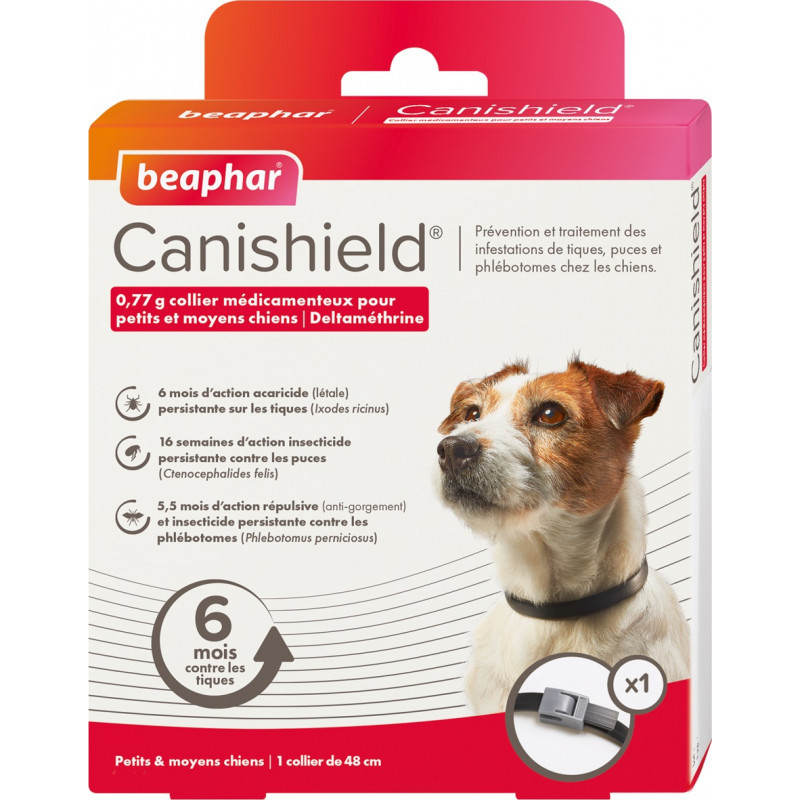

![]() 0808406035
0808406035
![]() 0808406035
0808406035
Features
6 MONTHS AGAINST TICKS
Ticks are unwanted and dangerous parasites that affect both humans and animals.
The most common and widespread ticks in Europe mainly belong to the hard tick family (Ixodidae), such as Ixodes ricinus, Riphicefalus sanguineus and Dermacentor reticulatus.
Ticks can transmit many infectious diseases to dogs and humans such as Lyme Disease.
The tick bite also causes skin pain and local inflammation which requires consultation with the veterinarian.
4 MONTHS AGAINST FLEAS
The most common fleas that infest dogs in Europe belong to the species Ctenocephalides felis (cat flea).
Most of the flea life cycle takes place in the environment and not on the dog.
For this reason, fleas can infest the dog wherever it is, through direct contact or through other animals.
Once the flea has found its favorite host, for example the dog, it generally does not abandon it unless it is brushed or treated with a pesticide.
Fleas feed on the dog's blood and this causes him discomfort and itching.
5 1/2 MONTHS AGAINST PHLEBOTOMES
Dog leishmaniasis is a severe chronic infectious disease, often fatal, transmitted by the bite of small mosquito-like insects called sand flies or commonly "sand flies".
They feed on blood, are active in swarms, in the hot season, from early spring to late autumn, especially from sunset to sunrise.
If the dog is stung by an infected sand frog, he becomes a carrier of the parasite and therefore "HIV positive" for Leishmania.
A dangerous reservoir of parasites which, always indirectly through the bite of the intermediate host sandfly, can infect other animals and humans.
In the place of the bite caused by the insect, a local inflammatory reaction develops, characterized by modest swelling, redness and discomfort.
The incubation period is highly variable and can last from 1 to several years, during which the dog can get sick at any time: there is a fair amount of variability in response to infection and this mainly depends on the immune defenses that affect the ability to react to the disease. 'infection.
Less sensitive dogs will develop cutaneous leishmaniasis with typical symptoms of pustules and dandruff all over the body, while more sensitive animals will also develop so-called visceral leishmaniasis (lymph nodes, marrow and spleen) with severe progressive chronic renal failure.
Phlebotomists
Sand flies are small flying insects that attack a variety of hosts including humans, dogs, and other mammals.
Sand flies represent a real danger in areas with a temperate climate because there is a high risk of transmitting deadly diseases.
In the Mediterranean, the most common vector of Leishmaniasis is Phlebotomus perniciosus[7,8].
Beaphar Canishield is ideal for protecting dogs from sand flies.
Deltamethrin, the active ingredient contained in Beaphar Canishield, is gradually released from the polymers of the collar matrix and transferred from the surface of the collar to the lipid layer of the skin and fur of the animal.
Deltamethrin is highly lipophilic, meaning it spreads very quickly through the superficial skin layers throughout the body.
Deltamethrin does not act systemically, which means that it is not absorbed into the dog's bloodstream.
Deltamethrin is neurotoxic to arthropods including ticks, fleas and sand flies by being absorbed through the insect cuticle.
The active ingredient of absolute and prolonged efficacy continues to migrate from the matrix of the collar to the skin surface for its entire duration.
Always read the entire package insert and package before using the product.